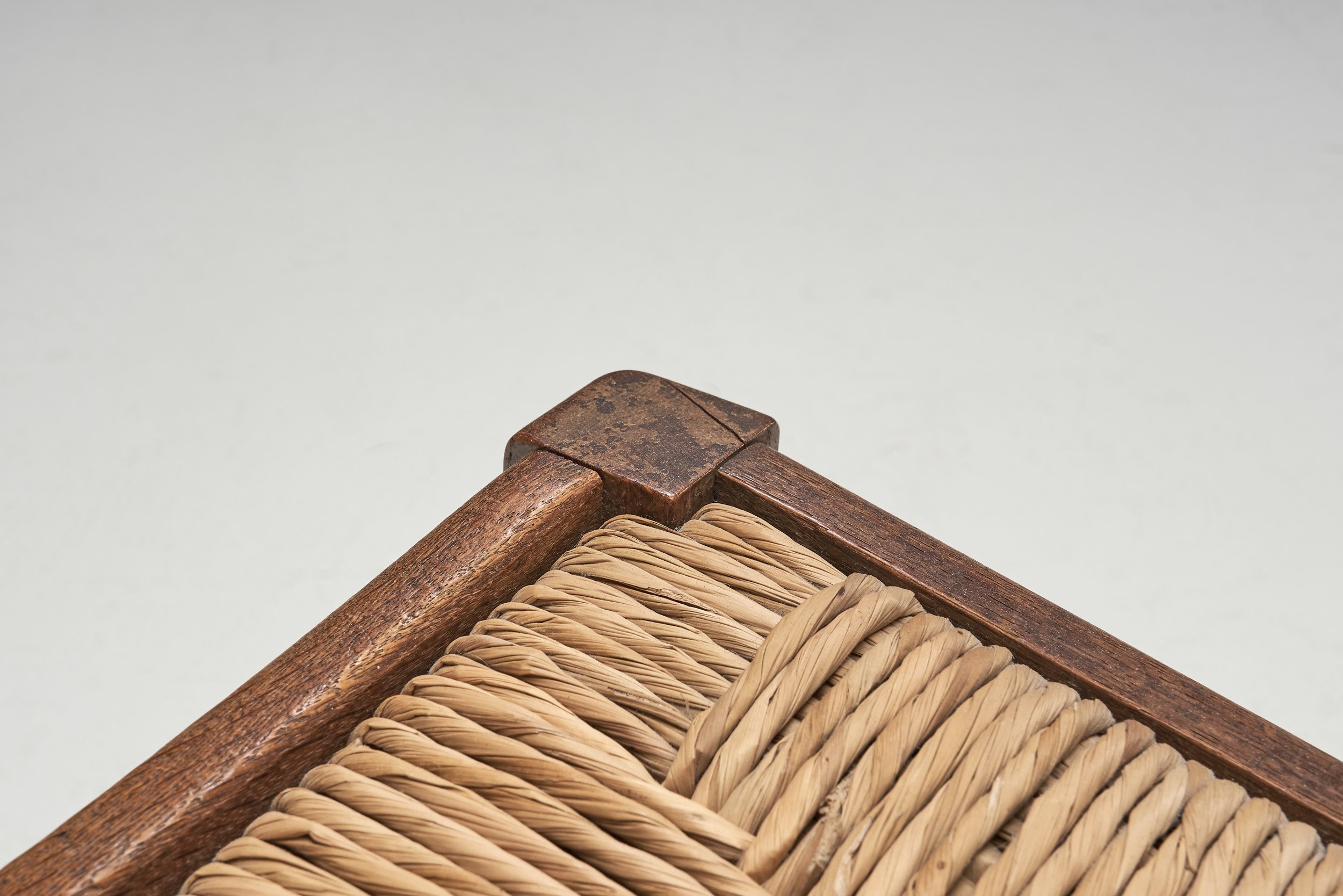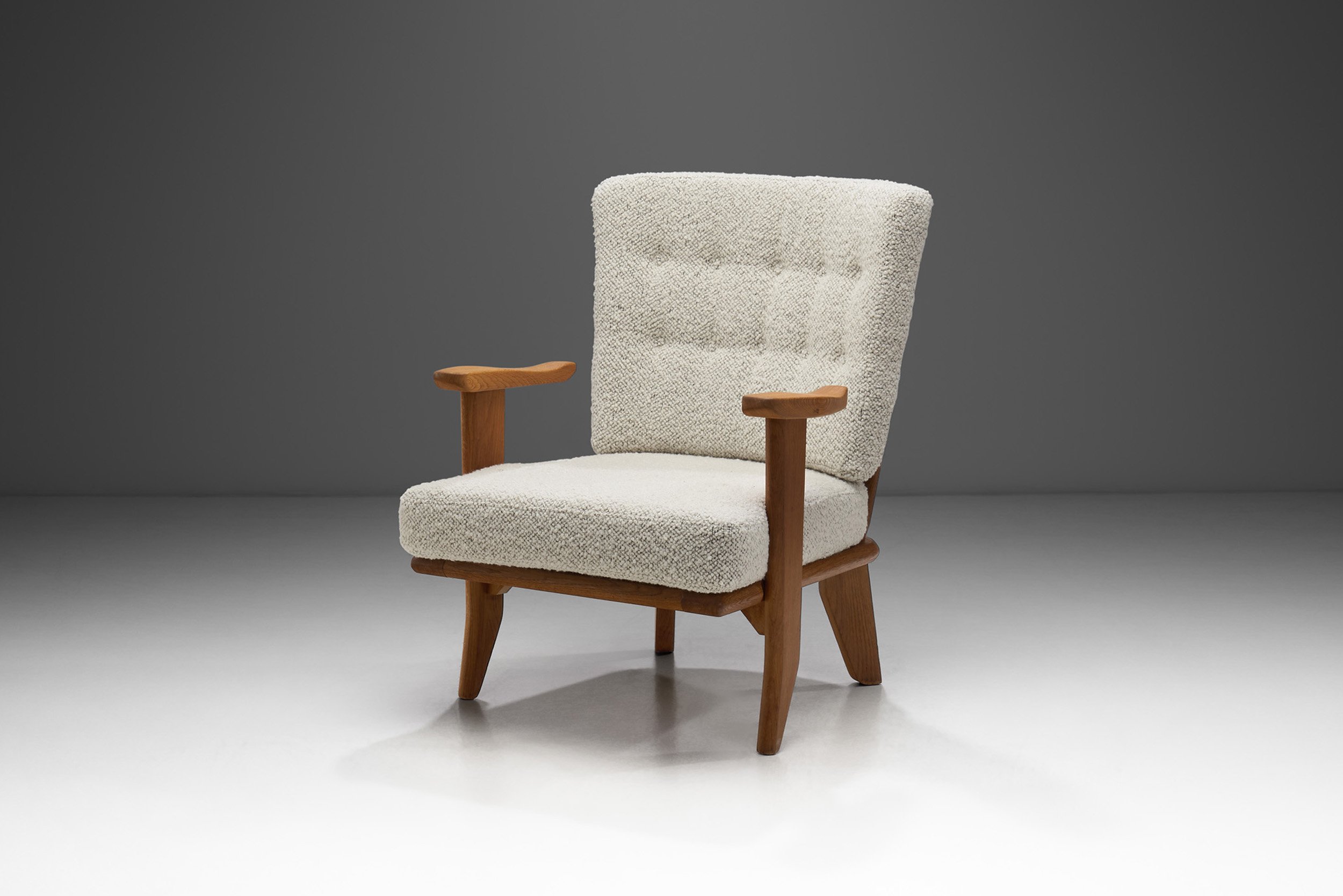Bas van Pelt Oak and Rush Armchair, The Netherlands 1940s (sold)



















Bas van Pelt Oak and Rush Armchair, The Netherlands 1940s (sold)
This whimsical armchair in solid oak and rush by Dutch designer, Bas Van Pelt, is a rare model with plenty of visual delights. The construction of this 1940s design is simple at its core, but thanks to its details, it is a playful representation of early Dutch modernism.
While Bas Van Pelt's creative work was primarily influenced by the straight lines of the 1920s dominated by The Hague School, this armchair is the result of his more mature design era, which was primarily dominated by natural materials and more curvature. While made of solid oak, this armchair has an open feel to it thanks to the horizontal open spaces on the back that divide the three original rush panels. The curved lines of the armrests nicely contrast with the straight lines of the frame, and show wonderful craftsmanship. The rush weaving on the back and seat creates textural interest, adding the appealing roughness of nature to the design. The legs and stretchers are much simpler in their design, serving a primarily structural role, letting the rush weaving and the arms stand out. Thanks to the well-chosen proportions and the expert weaving technique, this armchair provides great comfort. The oak has a beautiful patina due to its age, which further adds to the organic look.
Bas van Pelt’s progressive designs were, in many ways, ahead of his era. The Dordrecht-born designer’s furniture models are quite rare, a few are preserved in the Stedelijk Museum Amsterdam for modern art, contemporary art, and design.
SOLD
Condition:
In good vintage condition. Wear consistent with age and use. Some minor marks and scratches on the wood.
Dimensions:
27.55 in W x 29.52 in D x 38.58 in H; Seat height 12.4 in
70 cm W x 75 cm D x 98 cm H; Seat height 31.5 cm
About the Designer:
Bas Van Pelt (1900 Dordrecht (NL) - 1945 Sandbostel (DE)) was a well-known Dutch interior and furniture designer, known for the clarity and quality of his designs. His works created in the 1930s and 1940s are regarded for their progressive design and quality.
While he is most well-known for his chair designs, van Pelt was also active as an interior designer. He also designed fabrics for window coverings, rugs and carpets, seating and tables, as well as lighting crafted by the best craftsmen in the Netherlands. He worked with multiple manufacturers, including his own firm, Bas van Pelt / My Home and Verto Verenigde Touwfabrikien, where his tubular metal designs were produced. Furthermore, he opened ‘My Home’ in 1931, just before the onset of the great crisis in the midst of major changes in the last century. In the façade of the shop, in the lively centre of The Hague, there was one large window placed so that everyone could look inside and see how things were made, and could be done differently; in his view, modern furniture at the time was light and airy, transparent, made of tubular steel frame, combined with wood. This view was very progressive for the 1930s, when the influence of The Hague School was still dominating most designers.
Unfortunately, in 1940 WWII changed the life of Bas van Pelt as well, who was on the board of the Haagse Kunstkring, where discussions about reconstruction after the war took place. Sadly, Bas van Pelt did not live to see it. He was deported because he gave people in hiding a safe place, saving many lives. While there is very limited information about his life and work, his furniture designs have become collectibles in the past decades that are also found in Dutch museums. Bas van Pelt is remembered as a progressive designer and as a man who saved lives. ~H.






















